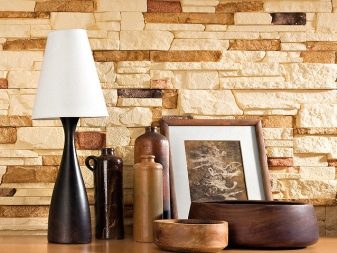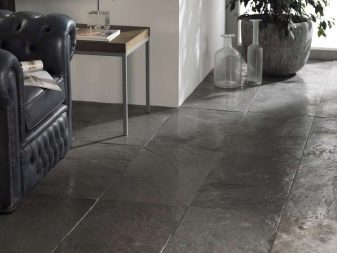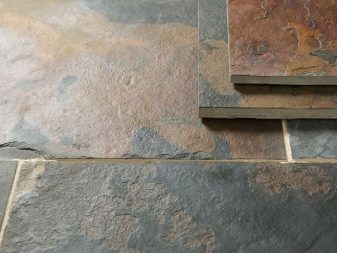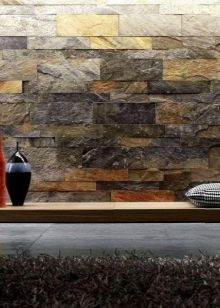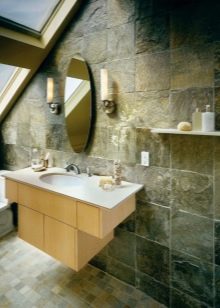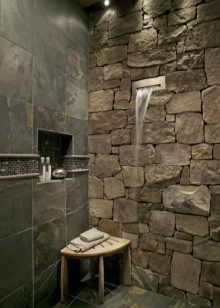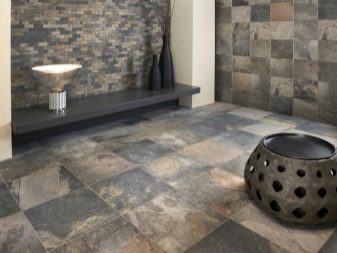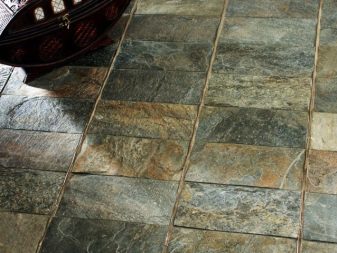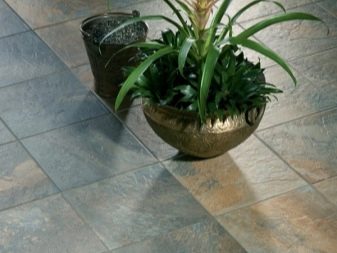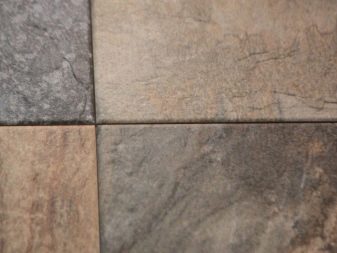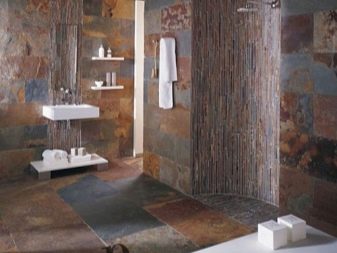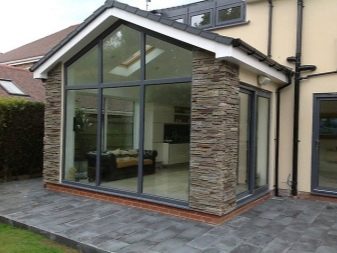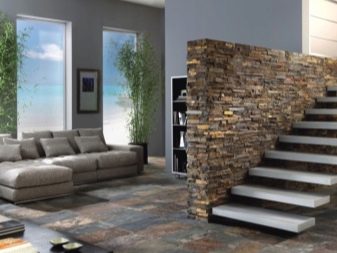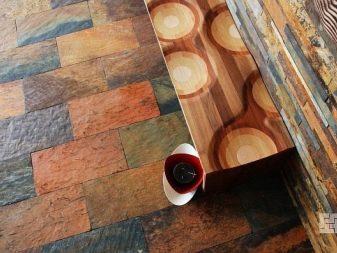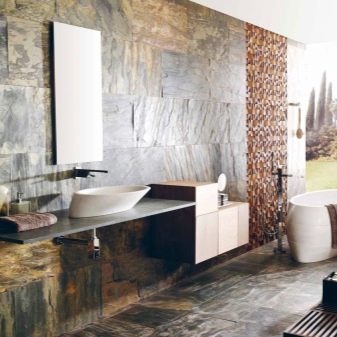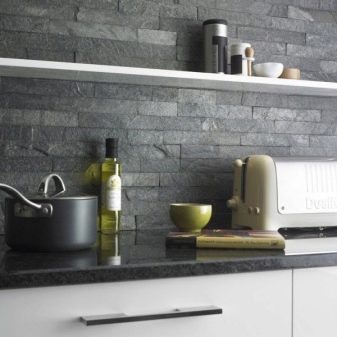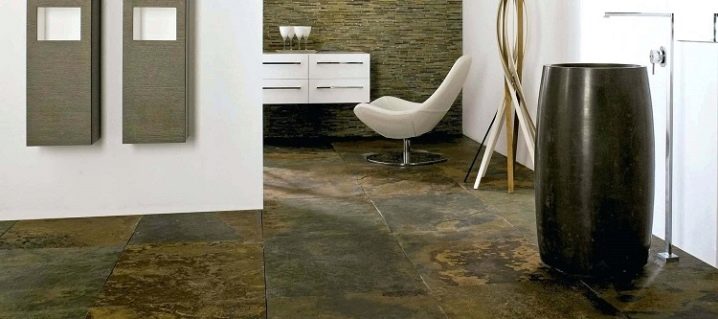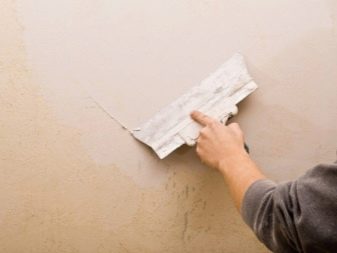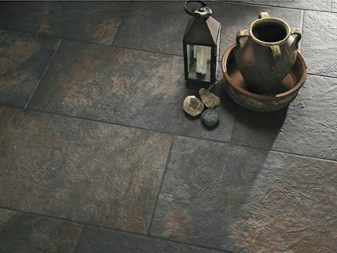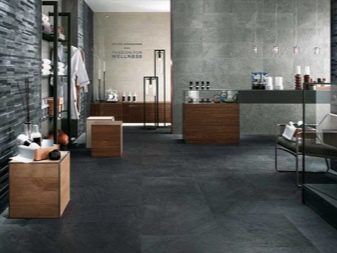Slate tiles: material features
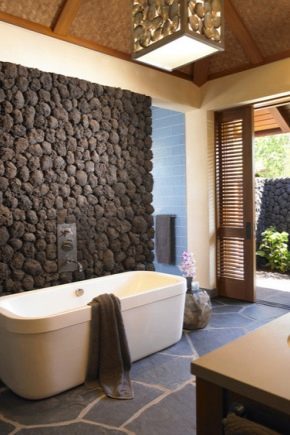
Slate is a natural stone of natural origin, which is used in construction. Finishing material of slate is most often made in the form of tiles, since this form is most convenient for lining. Let us consider in more detail the features of tile from slate and its area of application.
Special features
Shales are rocks that contain various minerals. Such material is used in construction for facing walls and floors, as well as for roofing of roofs. Shale coating may have a heterogeneous structure: some areas are durable, while others have a porous surface. To avoid the appearance of serious contamination of the surface and changes in the color of the material, the tile must be varnished.
Slate decorative tiles are not as popular today as other types of finishing materials, but this does not indicate its poor quality. Such a material is significantly less than marble or granite, but in no way inferior to them in quality and durability.
Shale is available in a wide range of shades and looks quite attractive. Such material is perfectly combined with wood, concrete, metal and glass surfaces.
In addition to differences in shades, tile coating varies in size. Basically produce tiles with a width in the range from 10 to 20 millimeters. The wall slate tile is issued a small thickness. For finishing the floor, on the contrary, suitable material with a greater thickness, but not more than 15 millimeters.
The following options are the most common along the length and width of the sides of a tile:
- 30x30 centimeters;
- 40x40 centimeters;
- 30x60 centimeters;
- 60x60 centimeters.
Kinds
On the modern market of finishing materials you can find many variations of shale coatings, differing in price and quality. The following coatings are supplied to Russia:
- Spanish Used for facing floors and walls.It features high quality, but the price of the Spanish slate is quite high.
- Indian tiles on the market are found in both high quality and rather low - it depends on the specific manufacturer of the finishing material. Some Indian shale coating companies are breaking material processing technology. As a result, the finished product will have a damaged structure and various defects.
- Chinese This type of coating has a low cost, but the quality of the material leaves much to be desired. Chinese slate tiles are short-lived, sensitive to mechanical stress, and over time, cracks appear on it.
- Brazilian tiles are of good quality and feature a variety of shades.
Application area
Natural slate has a fairly high quality indicators, which allows the use of such material in various areas of construction work.
Basically slate is used for the following purposes:
- As a flooring in residential and industrial premises.
- External wall cladding.
- Interior wall cladding.
- Decorating individual elements.The tile can be used to frame a mirror, washbasin or a small window in the bathroom. For finishing the mirror is better to use a tile of dark colors.
- Laying sidewalks.
- Roof for the roof.
When choosing a slate coating for interior work, certain characteristics of the material must be taken into account.
What you need to pay attention to:
- The size of the tile cover. The width and length of quality tiles should not differ by a millimeter. The smallest deviations in size will lead to difficulties in laying material. In addition, the coating of uneven tiles will look poor and unattractive.
- The thickness of the tiles should not vary significantly. If the products in the batch have obvious differences in thickness, this indicates a poor quality of the material. As a result of the installation you will get an uneven surface.
- Colour. The tile from slate has non-uniform color. In one batch products may vary in shades. It is important that such a difference is not too significant.
Advantages and disadvantages
Slate stone differs from other finishing materials in many technical characteristics.
The main advantages of slate tiles are as follows:
- High strength. Due to the hard surface of the slate tile can withstand heavy loads.
- Durability. A tile of good quality with proper care can last for many years without losing the original appearance.
- High water resistance. Such material can be used indoors with high humidity or outdoors.
- Fire resistance
- Resistance to temperature changes.
- Non-slippery surface. The tile structure is rough, so even wetted material does not become slippery.
- Ease of care.
- Resistant to the formation of stains on the surface.
- Bactericidal and hypoallergenic.
- Variety of colors. The shade of the tile depends on the minerals that make up the slate.
The disadvantages of this material is much less than the positive qualities.
You can highlight the following disadvantages:
- High cost compared to some popular finishing materials. For example, the price of a tile is much lower.
- Cold surface. It is possible to eliminate this disadvantage by installing a heated floor.
- Most likely to scratch the surface.Despite the fact that the tile is quite durable and hard, it can be easily scratched. For example, defects may appear from furniture legs. For this reason, it is advisable for furniture to purchase special silicone linings.
Laying instructions
Before you begin to finish the floor or walls, it is necessary to prepare the surface - clean it well from dirt, repair cracks and level. Cracks and irregularities are eliminated with plaster or putty. Then the surface is required to be ground.
For the sanding procedure, you can use sandpaper or a grinder for puttying.
As a tool for cutting tiles, you can use a circular saw on the stone. Finishing material is fixed to the surface with high-strength tile adhesive. If the tile is used for facing the floor, then it is better to use rubber-bitumen mastic as a bonding compound.
After complete drying of the adhesive composition, the joints must be filled with tiled grout. When finishing a damp room (for example, a bathroom), you can additionally fill the joints with sealant.
For information on how to use slate in the interior, see the following video.
